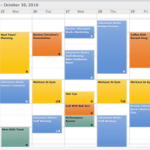office hours and e-mail
introduction
 office hours are important opportunities for good teaching. face-to-face in private, students share their confusions, misunderstandings, and questions more candidly and completely than they do in class, and you are in the best position to give them the individual attention they need.
office hours are important opportunities for good teaching. face-to-face in private, students share their confusions, misunderstandings, and questions more candidly and completely than they do in class, and you are in the best position to give them the individual attention they need.
teaching at its best: a research-based resource for college instructors by linda b. nilson, is a great source of information on how to make your office hours more productive.
getting students to see you
make efforts to induce students to see you. these efforts include finding the right place, setting the right times, and giving a lot of encouragement.
 the right place: office hours need not always be in your office. students may be more attracted to seeing you in a coffee shop or other comfortable locale on campus.
the right place: office hours need not always be in your office. students may be more attracted to seeing you in a coffee shop or other comfortable locale on campus.
the right times: be careful and considerate in scheduling your office hours. if you are available only briefly during prime class time–that is, when students are attending their other classes–then you immediately reduce your students’ ability to see you. if you teach a discussion, recitation, or laboratory section, make sure that your office hours do not  overlap with the lecture portion of the course. if there aren’t enough hours in the day, consider scheduling an early evening office hour, perhaps in the student union, the most appropriate library, or another student-friendly location. during the semester, remind your students that you also meet by appointment.
overlap with the lecture portion of the course. if there aren’t enough hours in the day, consider scheduling an early evening office hour, perhaps in the student union, the most appropriate library, or another student-friendly location. during the semester, remind your students that you also meet by appointment.
the right encouragement: start out by publicizing your office hours, first in your syllabus, then on the board during the first day of class, and intermittently during the term before “high traffic” weeks (before exams and paper deadlines). post your office hours prominently outside your office door. even the warmest  encouragement may not get students into your office hours, so you may have to “require” their attendance. for example, you could require each student to schedule a meeting with you early in the semester–as part of a paper assignment (draft review) or to go over a problem solution. this first meeting will foster repeat visits.
encouragement may not get students into your office hours, so you may have to “require” their attendance. for example, you could require each student to schedule a meeting with you early in the semester–as part of a paper assignment (draft review) or to go over a problem solution. this first meeting will foster repeat visits.
when students arrive to meet with you, especially the first time, make them feel more comfortable with some brief personal chat. it is helpful to spend the first few minutes finding out how they are, how they find the course, and how they are experiencing college. however, be careful to maintain appropriate boundaries in your relationship with the student. if you are meeting in your office, close the door for privacy but leave it slightly ajar. also, maintain a respectable seating distance.
making office hours productive
 advise students on how to prepare for meetings with you. you might instruct them to bring appropriate materials, such as their lecture notes, books, homework problems, drafts of their papers, or readings with troublesome passages marked. you might tell them to write out their questions or points of confusion to help clarify and prepare before meeting with you. in addition, remind them that office hours are not an opportunity to receive a recap of a lecture or lesson.
advise students on how to prepare for meetings with you. you might instruct them to bring appropriate materials, such as their lecture notes, books, homework problems, drafts of their papers, or readings with troublesome passages marked. you might tell them to write out their questions or points of confusion to help clarify and prepare before meeting with you. in addition, remind them that office hours are not an opportunity to receive a recap of a lecture or lesson.
make your sessions with students a chance to continue teaching them, by helping them work through their own confusions or problems. it may be helpful to respond to their questions with further questions that will lead them to their own conclusions. provide guidance toward problem-solving rather than simply giving students the answer.
inform your students about your use of email. the following guidelines suggest ways of structuring your email exchanges with students. once you’ve decided how you will use email in your teaching, it’s important to make these decisions clear to your students.
recognize the value of one-to-many emails. in the classroom, it’s not unusual that a question articulated by one student is a live question for many students. if a student emails you to ask a question that is generally relevant to the class, you might send your response to the entire class. in many instances, it’s a good idea not to include in your response the name or email address of the student who asked the question.
 use email messages to establish course/teaching faq. if a question is asked often, either in the same class or from semester to semester, consider adding it and your response to it to a course frequently asked questions collection.
use email messages to establish course/teaching faq. if a question is asked often, either in the same class or from semester to semester, consider adding it and your response to it to a course frequently asked questions collection.
consider establishing email office hours. if you’ve published office hours, students know when they can expect to find you to ask a question about the class. it would be helpful to them also to know when they might expect a response to an email message about the class. the notice here could be something rather general (e.g., “i generally check email only once a day.”) or specific (e.g., “i will respond to student email messages between 2:00 and 3:00 on tuesdays and thursdays.”) you are free to respond at other times, just as you are free to be available for student appointments at times other than your stipulated office hours. but it’s important for students to know when they can reasonably expect an answer to an email message.
assign pre- or post-class email messages. depending on the size of the class, consider requiring students to email a question about the reading to you before the class starts. a quick skim of these emails can give you a sense of the students’ understanding of the material and shape your approach to it during the class session. similarly, requiring students to email a question they have about the issues discussed in a particular class can give you a sense of the effectiveness of that discussion.
shift some email exchanges to face-to-face discussions. some matters are better discussed in person than via email. in some instances, one might respond to a student email with a request that the student come to the office for a face-to-face discussion.
web resources
office hours, from the university of washington, provides helpful tips on managing office hours.
tips for holding office hours from the 2022年世界杯中国小组赛积分 excellence at waterloo.

this teaching guide is licensed under a creative commons attribution-noncommercial 4.0 international license.